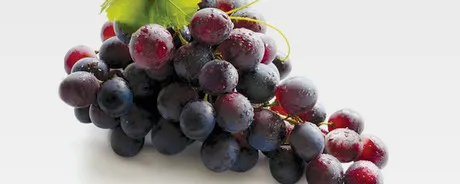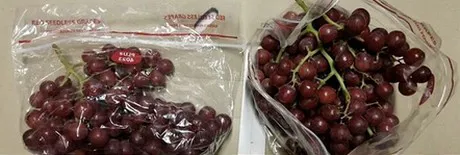This season’s imported grape scene looks a little different from 2017-2018’s season.
“Supplies of table grapes in the Northeastern U.S. and Canada in January and February have been uncharacteristically low,” says Mark A. Greenberg , president of Capespan North America, which is based in Saint-Laurent, Que. and operates in the U.S. from offices in New Jersey and California. The low supplies trace back to predictions that there would be a massive 2018 California domestic crop which would significantly factor into the North American market right through December. “This caused early Peruvian shippers to direct their focus away from North America,” says Greenberg. “In addition, early Chilean supplies were light with far fewer early Flames and Sugarones being directed to North America. The result has been a short-supplied market with relatively robust prices well into February.”

Different scene in Canada
However, Greenberg notes that in Canada, the situation is a little less dramatic. “Unlike entry into the U.S., South African grapes have fairly easy access into Canada. So, since mid-January, Quebec and Ontario have been supplied by South African table grape sources keeping retail programs relatively well-supplied,” says Greenberg.
Overall, Chilean volumes into the North American East Coast are down by as much as 35 percent while Peru is up slightly. “But one must remember that last season Peru produced a very light crop due to a poor fruit set from early spring rains and flooding,” says Greenberg. “While the absolute tonnage of Peruvian grapes shipped to North America in 2018-19 increased by 17 percent over last season, the percentage that Peru’s North American tonnage represents of its total exported tonnage declined from 42 percent last year to 36 percent this year.”
Meanwhile South African volumes into North America are up by 13 percent, keeping in mind that North America accounts for less than five percent of South Africa’s grape exports.

Stronger pricing for now
The effect of all of this shifting on pricing has been noticeable. Traditionally the end of February sees table grape prices on the East Coast start to drop as heavy supplies from Chile start to arrive. “However this year, the fact that the market has until now had little inventory buffer or weekly carryover, prices are substantially higher than last season, especially on white seedless grapes,” says Greenberg.
At the same time, fixed programs are absorbing a large part of the arriving table grapes. “Last season in Week 7, white seedless grapes from Peru and Chile sold in the US$ 18 –$22 range,” says Greenberg. “This year in Week 7 the prices were closer to US$ 26–$30.” During that same week, last year’s red seedless prices were in the US$16-$20 range while this year they’re between US$26-$30. “There are also fewer Flames to occupy the lower part of the range and more new varieties occupying the higher range,” adds Greenberg.
Looking ahead, while Peru is wrapping up its seedless season, Chile is ramping up, especially on red seedless varieties. “A very hot summer accelerated the grape harvest in Chile’s later regions which suggests to us heavy arrivals in March and a quick decline in April,” says Greenberg. “That will likely soften March pricing. But the Chilean growing conditions have been excellent and the fruit will likely have the “legs” to allow sellers to introduce the fruit into the market more slowly than it arrives.”
At the same time, Capespan North America will also import white seedless table grapes from India in April and early May. However they’ll be available in Canada only, since grapes from India aren’t yet permitted to enter the USA.
For more information:
Mark A. Greenberg
Capespan North America
Tel: +1 (514) 739-9181
markg@capespan-na.com
www.capespan.com
